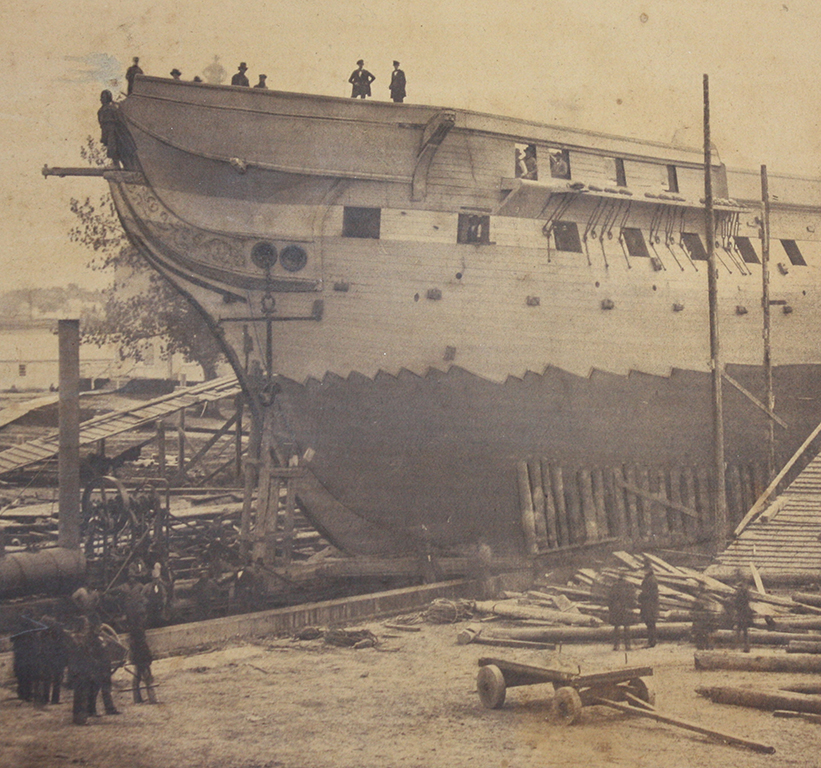In January 1839, Frenchman Louis-Jacques-Mandé Daguerre announced that he’d discovered the secret of capturing permanent images of the world. Using the light sensitive properties of silver iodide, and working out a way to both develop and fix the image on a thin sheet of metal, the resulting “daguerreotype” process transformed his contemporaries’ ways of looking at the world around them, and our way of looking at history.
By September of the same year, the secrets of the process had been transmitted to the United States, and an intrepid band of Yankee tinkerers began to experiment for themselves. In October, Philadelphia lamp merchant Robert Cornelius took what has been acknowledged as the first surviving photograph in America–and the world’s first selfie!
While the daguerreotype process created a highly detailed and beautiful image, each photo was unique because there was no way to make multiple reproductions of the original plate. By the 1850s, photographers had embraced the wet collodion process, a technique that captured an image on a glass plate negative. Photographers then developed the negative into a positive print using light-sensitive paper. Initially, this paper was treated with a weak solution of sodium chloride (salt) and then a strong solution of silver nitrate. Later, the paper was treated with a mixture of egg whites and the other chlorides, producing what is known as an albumen print.
USS Constitution had long been a favorite subject of American artists, but the earliest known photographic image of the ship dates to 1858. For much of the preceding 20 years, when photographers began capturing the world around them, the ship had been sailing in far-off places where no photographers could be found. In 1855, the ship returned to the United States and was laid up at the Portsmouth Navy Yard. In July 1857, navy yard workers began to outfit Constitution as a school ship for the U.S. Naval Academy.
It was in this location that Portsmouth photographer Albert Gregory captured the ship for posterity in May 1858. Gregory excelled at making daguerreotypes. In fact, he won an award at the New Hampshire State Fair in 1854 for a “stereoscopic daguerreotype,” a device that enhanced a viewer’s sense of depth when looking at an image. By the middle of the 1850s, he began to shoot his subjects using glass plate negatives that allowed him to make multiple positive prints on salt paper.
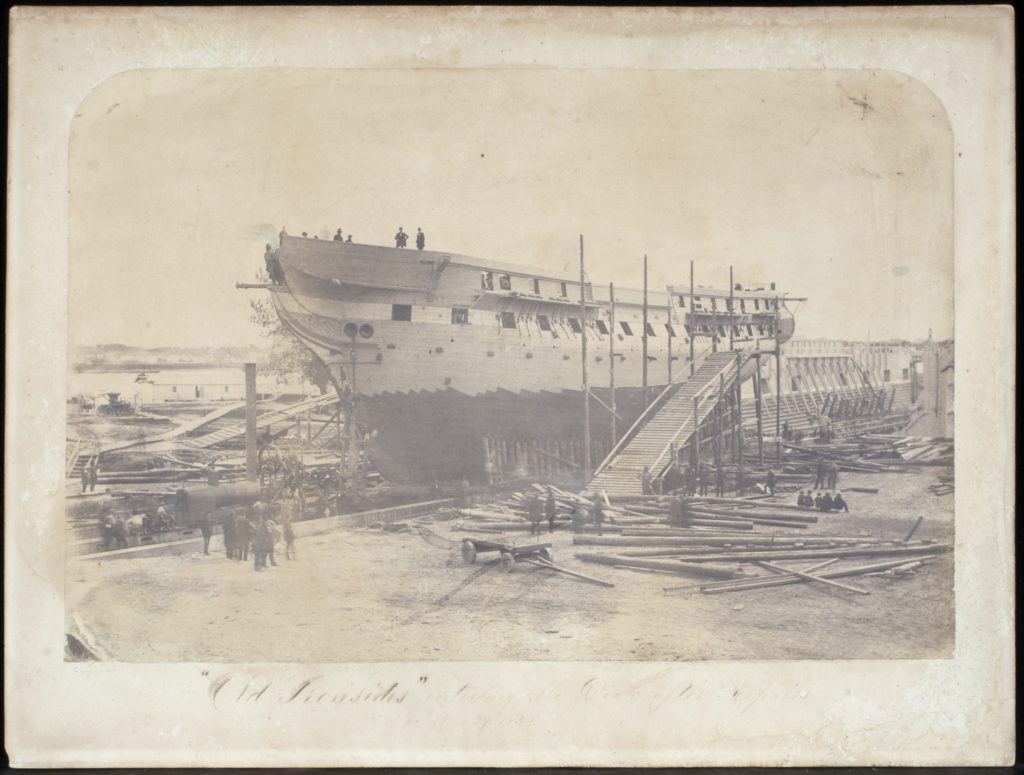
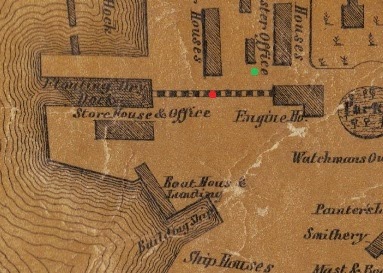
Gregory’s wonderful portrait of the ship captures a moment in time. We can tell it is late May, because the small tree just behind the ship’s bow is heavy with new leaves. The ship has been hauled out of the water on the yard’s floating drydock railway. The small steam engine positioned just before the bow provided the power to haul the ship’s bulk from the dock. And what a bulk it is. The men standing jauntily about the yard are dwarfed by the ship’s hull. We can see all the changes wrought by the dockyard during the previous year. The waist amidships has been enclosed, and the bulwarks raised by boarding up the hammock nettings. The bow structure and quarter galleries have likewise been enclosed. Naval architecture had changed since the late 18th century, and the U.S. Navy now imposed new ideas on its old ship. But beneath the waterline, the hand of Joshua Humphreys is still evident. Even though the yard workers haven’t finished coppering the hull, we still can see that fine entry and great depth of hold that gave the ship its famous speed under sail.
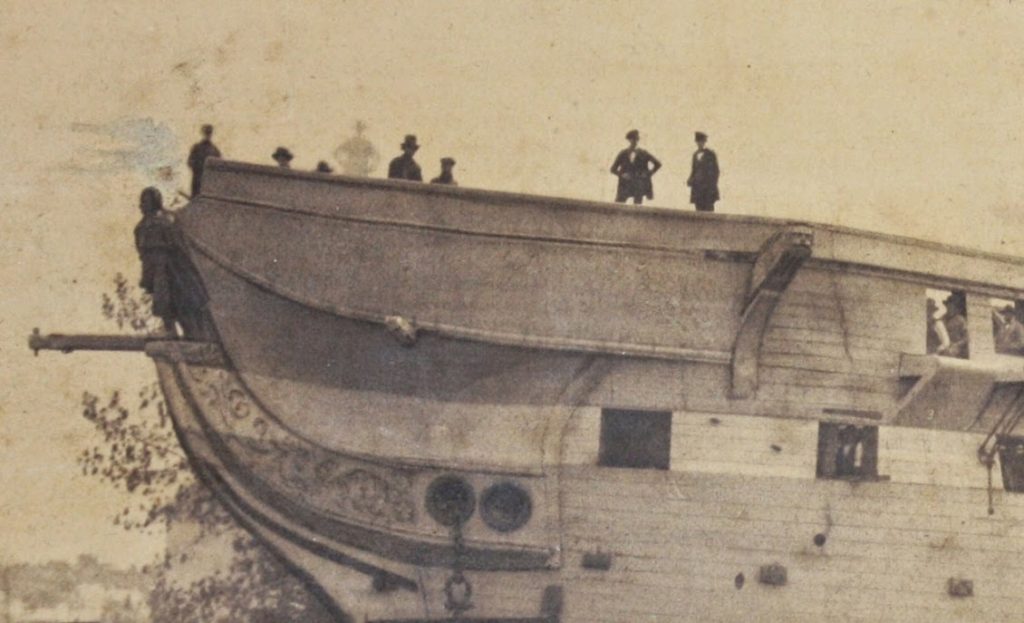
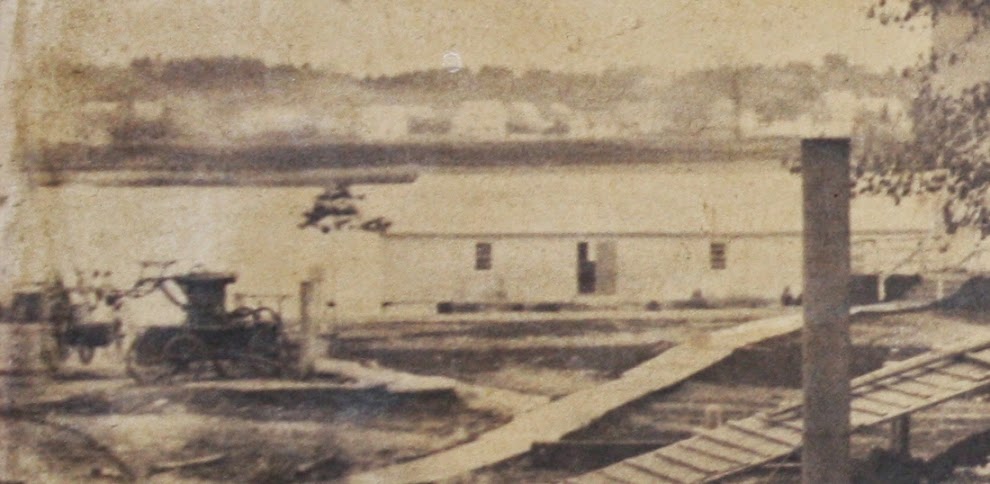
While this might have been the first time Constitution posed for the camera, it certainly was not the last. It seems fitting Albert Gregory captured the ship in a moment of transition, as it moved from one phase of existence as an integral part of the fleet, to one of lighter duties leading to eventual retirement. In a way, the picture embodies photography’s greatest gift, by capturing those fleeting moments so that they might live on forever.
The Author(s)
Matthew Brenckle
Research Historian, USS Constitution Museum
Matthew Brenckle was the Research Historian at the USS Constitution Museum from 2006 to 2016.
